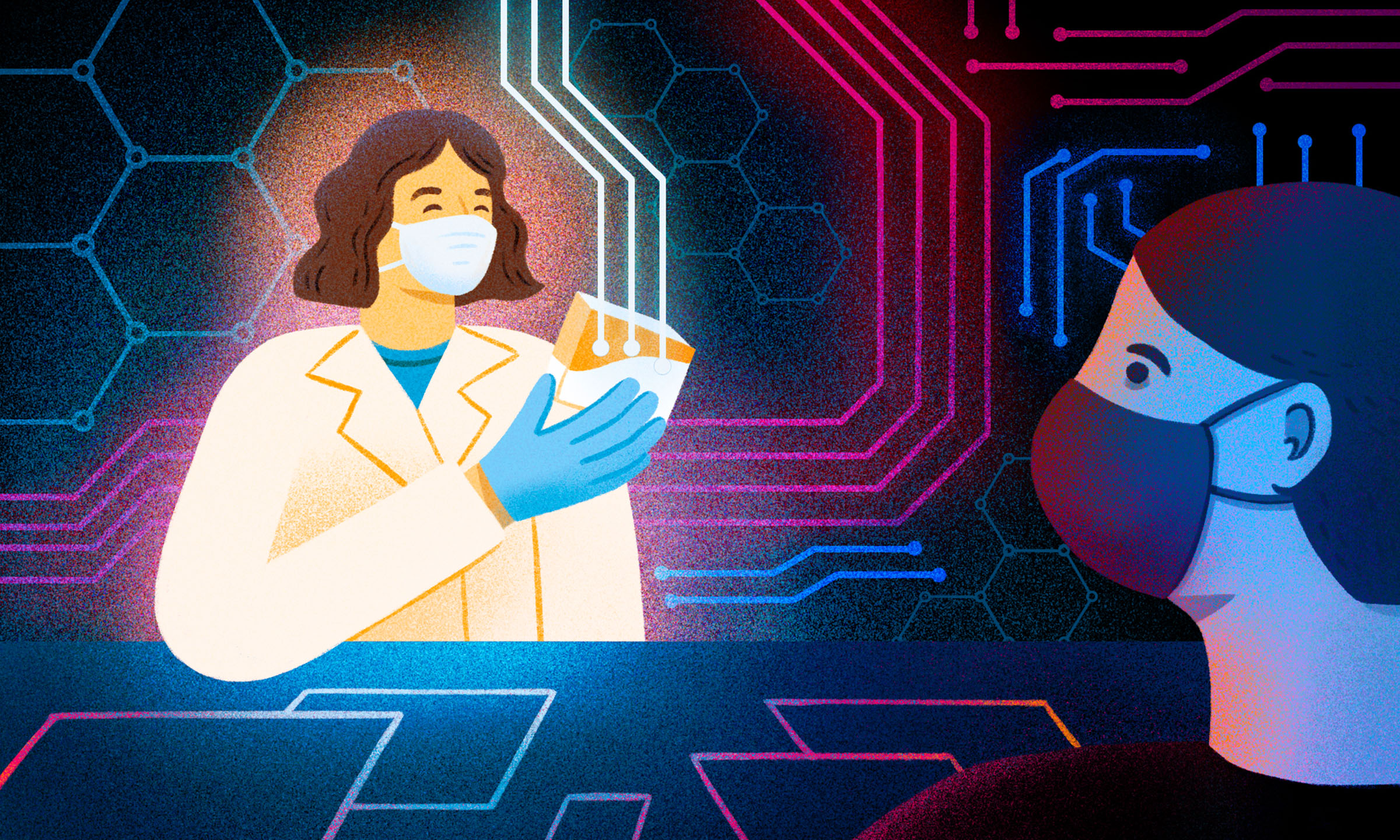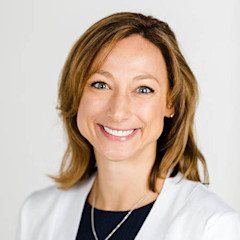Facing Long Hours and Exhaustion, Pharmacists Ask for Help, Resources
Even before the COVID-19 pandemic, many pharmacists were already dealing with burnout due to staff shortages, long hours, reimbursement issues and other factors. The pandemic has since brought to light other new factors and challenges leading to burnout. Below, we’ll outline the causes of pharmacist burnout, the dangers it can bring and prevention techniques.

Most of us have experienced feeling overwhelmed by work, family or other stressors, but some professions face greater rates of stress, anxiety and burnout. Healthcare workers, for example, can be especially taxed during times of crisis.
Before the COVID-19 pandemic, pharmacists were already experiencing burnout at greater rates than their healthcare peers. A 2017 survey, for instance, found pharmacists reported higher rates of burnout in practice than surgeons, oncologists and emergency-medicine practitioners.Factors associated with burnout among US hospital clinical pharmacy practitioners: results of a nationwide pilot survey, Hospital Pharmacy Journal, 2017 While a January 2020 study, just prior to the start of the pandemic, found pharmacist burnout in 75 percent of study participants.Prevalence and risk factors of burnout in community pharmacists, Journal of American Pharmacists Association, 2021
Now it’s possibly even more prevalent. As U.S. Pharmacist noted in a May 14, 2021, article:
Since the start of the pandemic, prescription volume has fluctuated, drive-through use has increased, COVID-19 testing has been implemented, and vaccination changes have occurred. A perfect storm is brewing in community pharmacy owing to the new, unique challenges directly associated with the COVID-19 pandemic that have the potential to leave burned-out pharmacy personnel in the aftermath.
U.S. PharmacistMay 14, 2021
According to the World Health Organization, burnout is “a syndrome conceptualized from chronic workplace stress that has not been successfully managed.” Burn-out an 'occupational phenomenon': International Classification of Diseases, World Health Organization, May 28, 2019 It’s an occupational phenomenon — not a medical condition.
The syndrome is characterized by these dimensions:
- Feelings of energy depletion or exhaustion
- Increased mental distance from one’s job
- Feelings of negativism or cynicism related to one’s job
- Reduced professional efficacy
In this article, we’ll examine the dangers pharmacists face from burnout, its causes and potential solutions.
The dangers of pharmacist burnout
Burnout can have profound and wide-ranging consequences, including negative impacts on health, like poor self-care, substance abuse, depression and suicidal ideation. Physician burnout: contributors, consequences and solutions, Journal of Internal Medicine, 2018 Along with the physical and mental toll, burnout can also lead to job dissatisfaction, reduced commitment and distraction — all of which can potentially result in harmful errors to patients.
Pharmacists could face potential lawsuits from these burnout-induced errors, but burnout can also cause problems at an organizational level within pharmacies, including increased absences and high turnover among staff.
In a recent pharmacy workload survey conducted by the State of Ohio Board of Pharmacy, pharmacists were asked if the workload-to-staff ratio allowed them to provide for patients in a safe and effective manner. Of the 1,400 pharmacists surveyed, 89.4 percent disagreed and 56.7 percent strongly disagreed.
75% of pharmacists said they were burned out — before the start of the COVID-19 pandemic.
Journal of American Pharmacists Association"Prevalence and risk factors of burnout in community pharmacists"
The causes of burnout are rooted in personal and workplace concerns
Patients are relying more on pharmacists more than ever. Nearly all — 99 percent — of those surveyed in our 2021 patient survey said their relationship with their pharmacists had changed.
Among the changes noted:
91 percent said they’ve relied more on their pharmacist for information about their condition and medication
90.7 percent relied on them to explain benefits and payment options for medications
36.2 percent received services unrelated to their medications, such as immunizations and testing.
Even prior to the COVID-19 pandemic, pharmacies had already begun expanding their services to meet community demands over the years. But since the pandemic, pharmacies have experienced a rapid shift in expectations and workload.
In our latest 2021 survey of pharmacists, more than half said they disagree or strongly disagree that they have enough time to complete their job adequately. The top reasons cited for the lack of time were inadequate staffing and performing administrative tasks, such as prior authorization (PA) requests and phone calls.CoverMyMeds Pharmacist Survey, 2021
Pharmacies are also seeing an increase in the number of daily prescriptions written. More than 90 percent of community pharmacists said their workload has increased significantly because patients are stocking up on medications and supplements for chronic conditions. Coping with the burden of the COVID-19 pandemic: a cross-sectional study of community pharmacists from Serbia, BMC Health Services Research, April 6, 2021
For pharmacists facing increased workloads due to an increase in patient care duties, extended hours during the pandemic and inadequate staffing, the causes can be divided into two categories: personal and workplace.
Personal stressors include:
- A person’s health
- Family dynamics
- Financial hardship
- Work/life imbalance
Workplace stressors include:
- Heavy workload
- Negative coworker relationships
- Lack of autonomy
- Unhappy patients
- Technology
Technology stressors can include excessive alerts, lack of training and usability concerns with their pharmacy systems. Comments from pharmacists in our most recent survey highlighted their frustration, with some saying, “Outdated software with poor tech help,” and “It’s archaic.”
In addition to their already heavy workload, pharmacists are now managing COVID-19 testing, curbside pickup and delivery, COVID-19 vaccinations and boosters — all of which can have them working 12 hours a day or more with little or no breaks.
In the Ohio Board of Pharmacy survey mentioned above, 86.4 percent said they strongly disagreed that they were given opportunities to take lunch and other breaks. When added to increased workloads from the COVID-19 pandemic, many pharmacists can’t call off for sickness or to simply recharge their batteries, which doesn’t leave much time for work/life balance.
In other words, self-care industry-wide is at an all-time low — yet another factor that can lead to burnout.
The top reasons cited by pharmacists for the lack of time were inadequate staffing and performing administrative tasks, such as prior authorization (PA) requests and phone calls.
CoverMyMeds Pharmacist Survey, 2021
What can pharmacists do personally to help combat burnout?
Unfortunately, the stress pharmacists are facing now, and post-pandemic, will likely continue. That said, things can be done to help manage stress and reduce the effects of burnout.
Early recognition of the signs of burnout — the most common being excessive fatigue — is the first step.
Other recommendations from the National Academy of Medicine include taking care of yourself with diet and exercise, taking breaks as much as your schedule allows, staying connected with colleagues, family and friends, and performing regular self-check-ins to take note of depression, sleeplessness and sadness.
How technology and outsourcing can help overworked pharmacists
With workloads expected to increase from COVID-19 boosters and influenza vaccines, many administrative and medication-related tasks may be lessened with available technology and outsourcing.
While one solution can’t solve all challenges, solutions that integrate with pharmacy systems and keep pharmacists in workflow can keep them off the phone and fax and automate other time-consuming manual tasks. This may free them to spend more time delivering quality face-to-face care and consulting with their valuable patients.
On the technological side, ramping up telepharmacy could have another positive effect on burnout. Telepharmacy allows pharmacists to use telecommunications technology to oversee pharmacy operations and provide patient-care services while working from home. For smaller pharmacies, especially those in rural areas, telepharmacy can make it easier for patients to get the care they need while allowing pharmacists to work remotely.
Everything pharmacists do — aside from physically putting pills in bottles — can be done from home, including PA, verifying prescriptions and patient consultations. One hurdle standing in the way of more widespread adoption of telepharmacy is the different state board regulations limiting inter-state practice.
In Ohio, for example, many board regulations that stood in the way of telepharmacy were waived during the pandemic, allowing pharmacists to work remotely. Because the results were so positive, there’s currently movement toward creating regulations that allow for remote work.
Other states are moving in that direction, too. Pharmacists looking to get more involved in helping to change legislation that puts restrictions on telepharmacy can contact their state pharmacy association for more information about what they can do.
Other solutions that can save time and free pharmacists to perform more patient-focused tasks are those that surface real-time prescription benefits and pricing.
These solutions can help pharmacists inform patients on medication costs without manually looking up pricing information and other affordability options. Having this information in workflow can help free time for pharmacists to spend more time practicing patient-centric care. Other integrated solutions can also lessen the burden of administrative tasks, such as automated PA updates and alternative medication information.
Innovating the pharmacy workspace to achieve workload balance and finding ways to allow pharmacists to practice at the top of their license may go a long way toward reducing burnout.
For a deeper dive into the healthcare technology challenges of pharmacists and others in healthcare, download our 2021 Medical Access Report: Healthcare Technology Edition.
The latest healthcare insights, floated right to your inbox.





